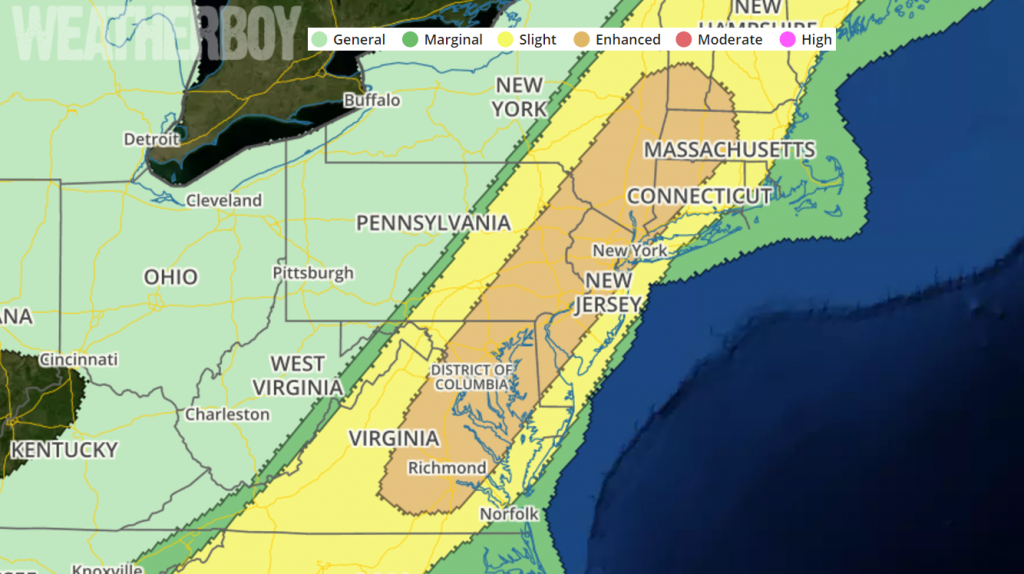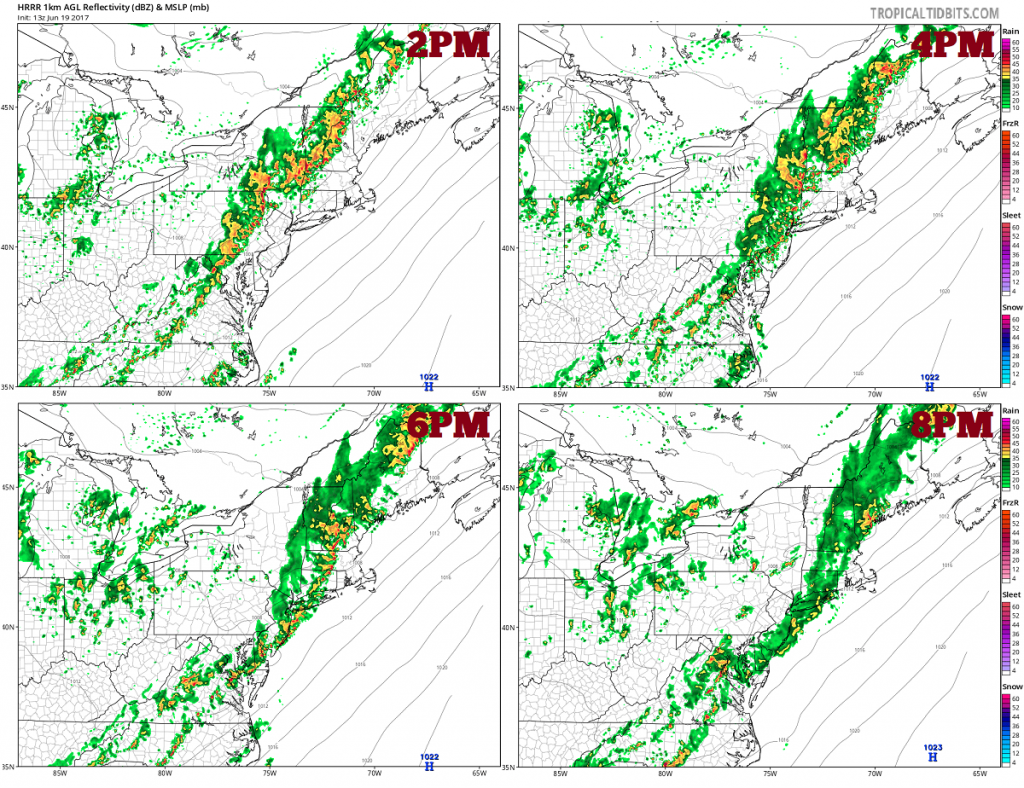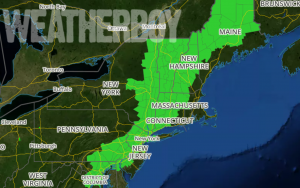
A day of danger is here as a potent frontal system is expected to create a large area of severe and potentially violent thunderstorms over a very heavily populated region in the country. The National Weather Service’s Storm Prediction Center has the I-95 corridor from just south of New York City through the Philadelphia, Balitimore, and Washington DC area, down into central Virginia outline as an area of “Enhanced Risk” of severe storms. This means there’s a substantial threat of severe thunderstorms in this region which could create damaging winds, frequent lightning, flooding rains, large hail, and isolated tornadoes.


The National Weather Service defines a severe thunderstorm as a storm having these characteristics: has measured wind gusts up to or in excess of 58mph, and/or hail to at least 1″ in diameter, and/or spawns a tornado. A thunderstorm doesn’t need to be severe to be deadly; lightning and flash floods from even non-severe storms have claimed lives before.
Storms will be at their most intense after 2pm. Damaging wind gusts will be the primary severe hazard but large hail is also possible. This type of set-up could also lead to isolated tornadoes, especially over Delaware, eastern Maryland and Virginia, New Jersey, Pennsylvania, and points north.
An upper-level trough will move across the Great Lakes and Ohio Valley on Monday as southwesterly mid-level flow remains over the Northeast. At the surface, a cold front will advance eastward across the lower Great Lakes and Ohio Valley. Ahead of this front, surface dewpoints in the mid to upper 60s should result in a corridor of moderate instability from the Carolinas north-northeastward into the Mid Atlantic. Thunderstorm development is taking place now with a gradual expansion of convective coverage taking place later in the afternoon. Several line segments may organize along the front moving to the coast of the Mid-Atlantic by early evening.
By 8pm, the line of showers and storms should be pushing off the New Jersey coast, but showers and storms will linger into the overnight areas to the north in New England and to the south over Virginia and the Carolinas.
This weather will likely play a role in today’s scheduled rocket launch from Virginia’s NASA Wallops Flight Facility. There, a rocket is due to lift-off shortly after 9pm but could be scrubbed if weather interferes.